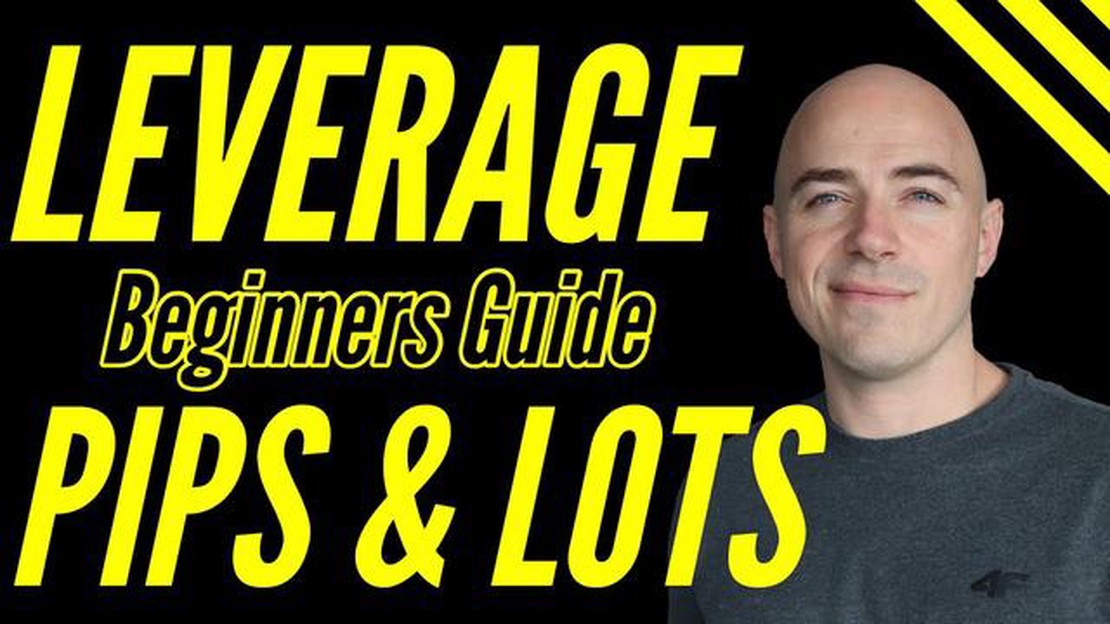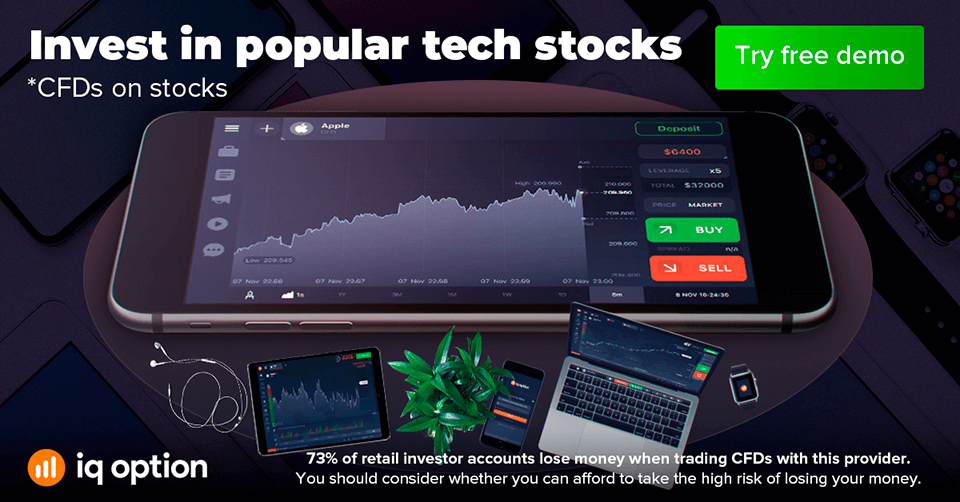Learn How to Utilize a Stochastic Divergence Indicator for Enhanced Trading Insights
How to Utilize a Stochastic Divergence Indicator In the world of trading, having access to reliable and accurate indicators can make all the …
Read Article
Forex trading is a popular investment option that allows individuals to trade currencies on the foreign exchange market. One of the key factors to consider when trading forex is leverage, which enables traders to open larger positions with a smaller initial investment. However, with different leverage options available, it is essential to understand the pros and cons of each to make an informed decision.
Leverage is essentially a loan provided by a brokerage to a trader, allowing them to control a larger position than their initial investment. It amplifies both potential profits and losses, making it a high-risk option. The most common leverage options in forex trading include 1:1, 1:50, 1:100, 1:200, and 1:500. Each option has its benefits and drawbacks, and traders need to consider their risk tolerance, trading strategy, and financial goals.
For conservative traders or beginners, a 1:1 leverage ratio may be the best choice. With this option, traders are not exposed to any additional risk, as they are only trading with their own capital. Although the potential profits are limited, it provides a good learning experience without the fear of substantial losses.
On the other hand, experienced traders who are willing to take on more risk may opt for higher leverage ratios such as 1:100 or 1:200. These leverage options allow traders to open larger positions with smaller initial investments, increasing the potential profitability. However, it is crucial to note that higher leverage also amplifies losses, and careful risk management is essential to avoid significant financial setbacks.
Lastly, there is the option of 1:500 leverage. This high leverage option can significantly magnify both profits and losses, making it the riskiest choice. It is typically favored by experienced traders who have a strong understanding of the market and use effective risk management strategies. However, it should be approached with caution, as a small unexpected market movement can lead to substantial losses.
In conclusion, choosing the best leverage option for forex trading depends on an individual’s risk tolerance, trading strategy, and experience level. It is crucial to thoroughly assess the advantages and disadvantages of each leverage ratio before making a decision. Remember, leverage can significantly amplify both profits and losses, so proper risk management measures must be in place to protect investments.
When it comes to forex trading, leverage is a key factor that can greatly affect your trading strategy and potential profits. Leverage essentially allows traders to control large positions with a smaller amount of capital, amplifying both potential gains and losses.
There are different leverage options available to forex traders, each with its own advantages and considerations:
1. Low Leverage: With low leverage, traders can control smaller positions relative to their capital. This can be advantageous for beginners or conservative traders who want to limit their risk exposure. While low leverage may result in smaller potential gains, it also reduces the risk of significant losses.
2. High Leverage: On the other hand, high leverage allows traders to control larger positions using a smaller amount of capital. This can be appealing for more experienced traders who are willing to take on greater risk in exchange for potentially higher returns. However, it’s important to note that high leverage also increases the potential for significant losses.
3. Variable Leverage: Some brokers offer variable leverage options, which allow traders to adjust their leverage based on their trading strategy and risk tolerance. This flexibility can be useful for traders who want to adapt their leverage according to different market conditions.
4. Margin Call Protection: Margin call protection is another important consideration when choosing a leverage option. Margin call protection mechanisms can help prevent traders from losing more money than they have in their trading account, by automatically closing out positions if margin requirements are not met.
5. Regulation and Limitations: It’s important to note that leverage options may vary depending on the regulatory environment. Different jurisdictions have different regulations and limitations on leverage, aimed at protecting traders from excessive risk. Before choosing a leverage option, make sure to familiarize yourself with the regulations in your jurisdiction.
Read Also: Exposing the Truth: FTMO Slippage Issues Unveiled
Understanding the different leverage options is crucial for forex traders, as it can greatly impact their trading strategy and risk management. By carefully considering the advantages and considerations of each leverage option, traders can make informed decisions and optimize their trading approach.
When it comes to forex trading, leverage is a key factor that can greatly affect your profitability and risk. Leverage allows traders to control larger positions with a smaller amount of capital, multiplying both potential gains and losses.
Read Also: Understanding the Mechanics of Forex Spreads: A Comprehensive Guide
However, it’s important to choose the right leverage for your forex trading strategy to ensure you’re not taking on too much risk. Here are a few considerations to keep in mind when determining the appropriate leverage:
 5. Market Conditions: Consider the current market conditions and volatility when selecting leverage. Higher leverage ratios can amplify both gains and losses, so it’s important to assess the market environment and adjust leverage accordingly.
5. Market Conditions: Consider the current market conditions and volatility when selecting leverage. Higher leverage ratios can amplify both gains and losses, so it’s important to assess the market environment and adjust leverage accordingly.
Ultimately, choosing the right leverage for your forex trading strategy requires careful consideration of your trading style, experience, risk tolerance, account size, and market conditions. It’s important to strike a balance between maximizing potential gains and managing risk to ensure long-term success in forex trading.
Leverage in forex trading is the ability to control a large amount of money in the market with a relatively small initial investment. It allows traders to magnify their profits, but also their losses.
The leverage options available in forex trading vary among brokers, but commonly include ratios of 1:50, 1:100, 1:200, and 1:500. These ratios determine the amount of control a trader has over their positions.
The best leverage option for forex trading depends on the individual trader’s risk tolerance and trading strategy. A lower leverage option, such as 1:50 or 1:100, may be more suitable for beginners or conservative traders, while a higher leverage option like 1:500 may be preferred by aggressive traders seeking larger profits.
The advantages of using high leverage in forex trading include the potential for larger profits and the ability to control larger positions. However, it also carries the risk of larger losses and increased margin requirements. Traders using high leverage must be prepared to manage their risk carefully and be aware of the potential volatility in the market.
How to Utilize a Stochastic Divergence Indicator In the world of trading, having access to reliable and accurate indicators can make all the …
Read ArticleWhat is Mae forex? The foreign exchange market, commonly known as forex or FX, is the largest financial market in the world. It is where various …
Read Article365 Trading Group: Legit or Scam? Find Out Here In the realm of online trading, it is crucial to separate the legitimate platforms from the scams. 365 …
Read ArticleWhat are the forex market hours today in the UK? Are you interested in trading on the foreign exchange market? One important factor to consider when …
Read ArticleUnderstanding the Moving Average of the Ichimoku Cloud The Ichimoku Cloud is a popular technical analysis tool that is used to identify potential …
Read ArticleUnderstanding the Difference between Vesting and Stock Options When it comes to employee compensation packages, two common terms that often cause …
Read Article